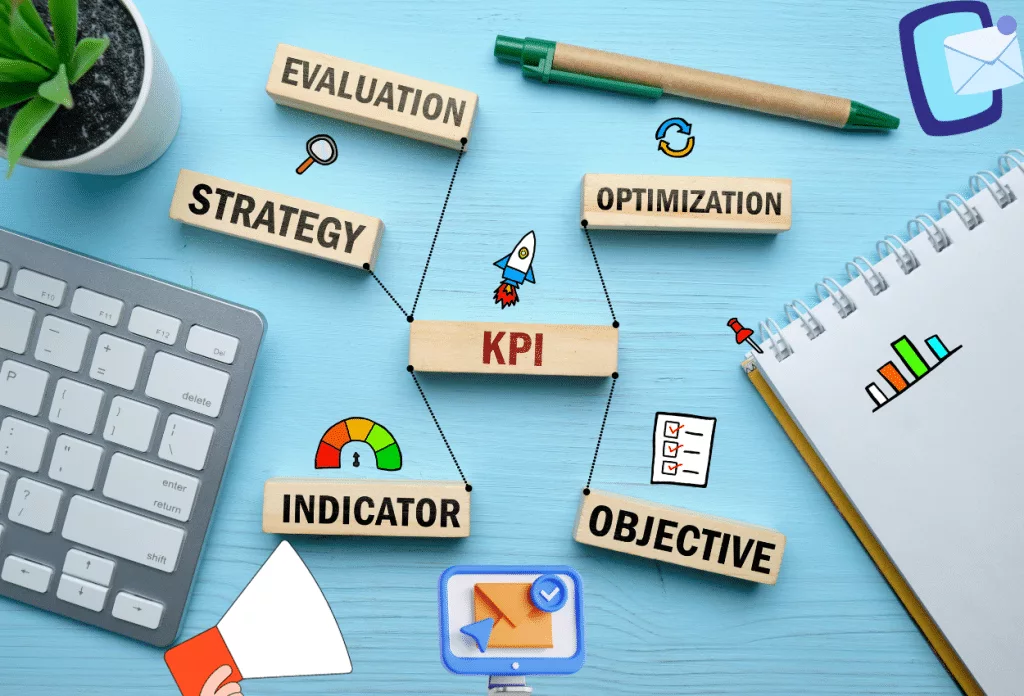If you’re thinking about starting an email marketing program, or even if you’ve been running one for years, it’s important to know how to measure its success. Email marketing has many benefits from driving sales to improving customer loyalty but if it isn’t measured properly, then what’s the point?
And while some companies are measuring their email performance using open rates and click-through rates (CTRs), this isn’t enough data by itself. Instead, we recommend using key performance indicators (KPIs) as well. This article will explore what Email Marketing KPIs are and why they are important for your business.
Email Marketing Metrics
Email marketing performance metrics are important because they help you understand how your audience is engaging with your emails. There are many different types of email analytics that you can use to measure the performance of your email marketing campaigns. Here are some of the most important metrics you should be tracking:
- Email open rate is the percentage of recipients who opened your email. It’s one of the most commonly used email marketing metrics, as it gives you insight into how many people viewed your message at least once.
- Click-through rate is the percentage of email recipients who click on any links in your email. This metric can help you understand how many people were interested enough to follow through on a call to action.
- The unsubscribe rate is the number of email addresses that are unsubscribed from your email list. This metric can help you identify any areas that need improvement, like a poorly written subject line or a lack of value in your content.
- Bounce rate is the percentage of emails that bounce back to the sender due to an invalid address or other error. It’s important to keep this number low, as it indicates that your subscribers are actively engaging with your emails by reading them and taking action on the links inside them.
- Delivery rate lets you know how many email addresses received your message. Delivery rates are more difficult to measure than other metrics, as they can vary based on factors outside your control like email client compatibility or ISP filtering rules.
- Others include conversion rate. Email Metrics can help you understand how effective your campaigns are, there is a need to track them. This information can then be used to improve or optimize them for maximum effectiveness.
The most effective, however, are KPIs. Let’s find out more.

What Are Email Marketing Kpis?
KPIs are short for key performance indicators. It is an important email marketing tool. They’re used to measure the success of a campaign, marketing activity, and even business overall.
A KPI is an objective that you want to achieve with your email marketing strategy. You can think of it as a target or goal that you need to meet in order for the campaign to be considered successful. Some examples include:
- Increased sales revenue from specific product line(s) by X% over time.
- Increased the number of subscribers per day/week/month/year by X%.
- Increased click-through rates of specific email content by X%.
- Increased page views per visit by X%.
- Increased time spent on site by X%.
All of the above-mentioned parameters can ensure a more effective email marketing campaign. How?
Why Do Email Marketers Include KPIs In Their Email Marketing Strategy?
KPIs are important for email marketing because they help you improve your results, and understand your audience and campaigns. They can help you;
Improve your results: KPIs can help you measure the success of your email campaigns by providing data on how many people opened a certain piece of content or clicked through to a landing page. This information allows you to make adjustments based on what’s working or not working so that future campaigns have better success rates.
Understand your audience: KPIs provide insight into who is engaging with emails so that marketers can better target their messages at the right people based on demographics like age range and gender as well as interests (e.g., sports vs fashion). This helps companies decide which types of content should be included in future emails if they want more engagement from those audiences who may not currently be interested in them (e..g., younger males).
How can you effectively use this tool?
How To Effectively Use Kpis For Email Marketing
Now that you know what KPIs are, it’s time to put them into practice. Focus on the data that matters. Don’t waste time looking at numbers that don’t help you understand what’s working and what isn’t.
A good rule of thumb is to only look at KPIs if they’re relevant to your business goals. If they aren’t helping you make decisions, then they’re not worth paying attention to. The point is, to keep track only when necessary so as not to waste valuable resources gathering data just for fun.
Focus on your goals. It’s easy to get caught up in the numbers and forget why you’re doing any of this in the first place. Make sure that every decision you make is tied back to your business goals and not just because other people say so.
If you’re not sure what your goals are, it’s a good idea to take some time out at the beginning of the year (or whenever it is that you’re starting) and make a list of all the things you want to accomplish in the next 12 months. This could include anything from getting more leads to driving traffic to your website or increasing sales conversions. Once you have these goals written down, it’ll be easier for your team to make decisions about how best to achieve them.

Set up a system for measuring and reporting on goals. This may be as simple as putting together a spreadsheet with all your business metrics (or it could be more complex). Either way, you’ll need to figure out how you’re going to measure success in each area of your business and then make sure that everyone is adhering to those standards.
If you’re not sure how to measure something, do some research and find out what other companies are doing. You might be surprised at how many different ways there are to report on certain metrics. This is also a good time to sit down with your team and make sure everyone understands how each metric will be used.
The bottom line is, to ensure that you’re measuring the right things. This is probably the most important step in setting up a system for tracking your goals and business metrics. If you don’t measure what matters, it won’t matter how many goals you set.
Using KPI Data In Email Marketing
Email marketing is a powerful tool for businesses, but it can be difficult to measure the ROI of your email marketing. The best way to improve your results is by using key performance indicators (KPIs) in email marketing. You can use KPI data to see how many people clicked on links or opened emails, what they did after clicking on those links, and how long they stayed on each page before moving on to something else.
You should also look at whether these actions were taken by new visitors or existing customers who have been receiving messages from you regularly over time (or both). This will help you understand what kinds of messages work best and which ones don’t seem effective enough at bringing new business into the fold.
Email marketing is one of the most effective ways to reach customers and drive sales. By using KPI data in your email marketing campaigns, you will be able to optimize them for maximum impact and get better results from your email marketing efforts. The best part is this, we can help you scale.



